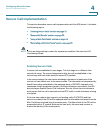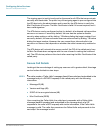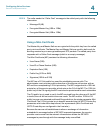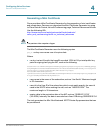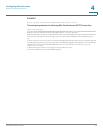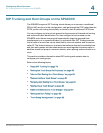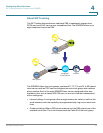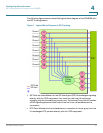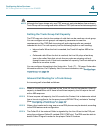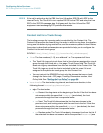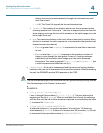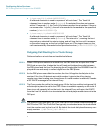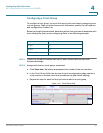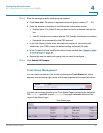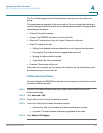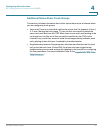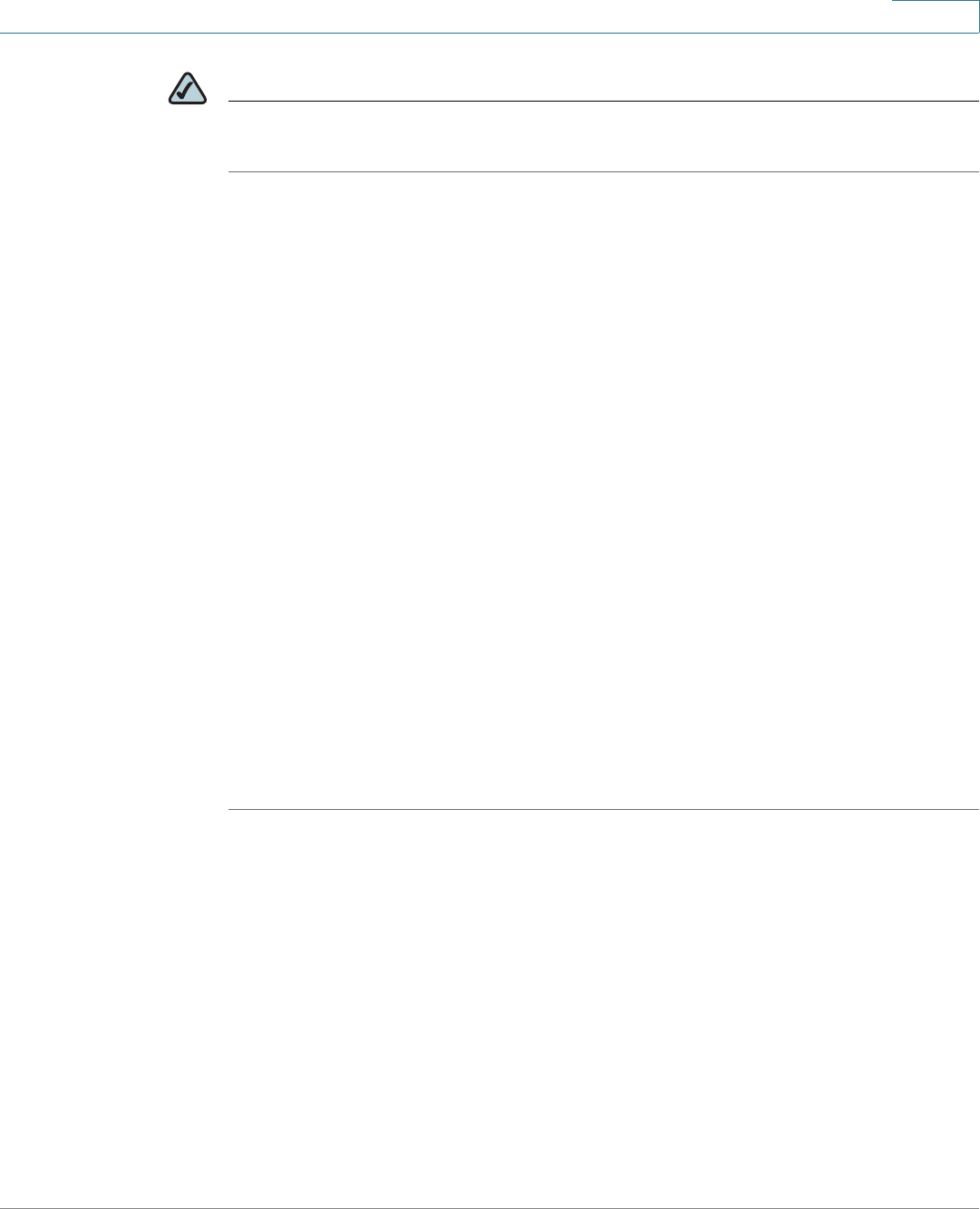
Configuring Voice Services
SIP Trunking and Hunt Groups on the SPA8000
ATA Administration Guide 80
4
NOTE Although the figure shows only one ITSP account, each standalone line and each
Trunk Group can be configured with a different ITSP (with some limitations applied).
Setting the Trunk Group Call Capacity
The ITSP may set a limit to the number of calls that can be made on a trunk group.
You can configure a trunk group’s call capacity parameter to meet the
requirements of the ITSP. Both incoming call and outgoing calls are counted
towards this limit. The call capacity has the following impact on call handling:
• Inbound calls: When the limit is reached, the Trunk UA replies 486 to the
caller.
• Outbound calls: When the limit is reached, the Line UA plays a fast busy
tone to the caller. Note that a trunk line can make an outgoing call only
through its own trunk. If that trunk reaches full capacity, it will not attempt to
failover to use other trunks.
You can configure this setting in the Voice tab > Trunk (T1 ... T4) page, Subscriber
Information section, Call Capacity field. For more information, see “Configuring a
Trunk Group,” on page 84.
Inbound Call Routing for a Trunk Group
An incoming call is handled as follows:
STEP 1 When an incoming call is detected by the Trunk UA, the UA first checks if there is
capacity to handle the call. If there is insufficient capacity, the UA rejects the call
with a 486 response.
STEP 2 If there is spare call capacity, the UA consults the Contact List to determine which
line or lines to ring (that is, for the proxy to send SIP INVITE to), and starts “hunting.”
(See “Configuring a Trunk Group,” on page 84)
STEP 3 When a line is selected to ring, one or more PBX phones may be alerted, according
to the PBX features and configuration.
STEP 4 The Caller ID of the external Caller is signaled by the Line UA out to the FXS port
using the configured Caller ID method (FSK, DTMF, etc.). The PBX must be able to
detect Caller ID signal in order for the proper Caller ID to show.



